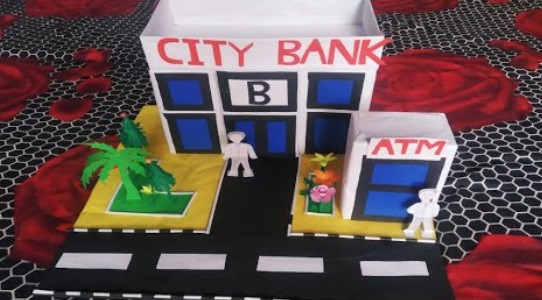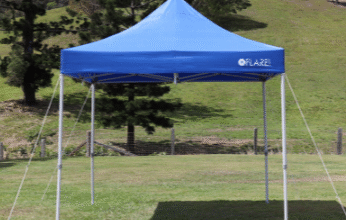Networking for Success: Building Strategic Partnerships at a Banking Exhibition

The growing banking and financial services industry is one where having good relationships is not only a soft skill, but it is a strategic requirement. An effective network provides access to abundant information, trends, and opportunities that are not readily available in open books. It is regarded as the source for identifying new customers, forming alliances, and gaining an understanding of competitors’ tactics. Moreover, to professionals, it is a gateway to growth and success in their career, mentorship and relevance in such an industry. However, the banking exhibition is a great way to increase your network, providing face time to meet with peers and industry leaders. Moreover, the bond that is created as part of a good network can be a source of trust and credibility, which are foundational to the financial industry.
The Top Tips for Building Strategic Partnerships at a Banking Exhibition
Banking exhibitions provide the right platform to establish all contacts that may culminate in strategic engagements. The strategy is to shift from only collecting business cards to engaging in meaningful, goal-oriented conversations. Below are the top tips to explore:
1. Research and Strategise before You Go: Going to the exhibition without a game plan is a big mistake. Research the attendees and exhibitors to identify key players and prospects that can be potential partners. Identify other companies that offer services or aim for what you do. As an example, consider a bank that focuses on wealth management. You should seek technology companies that have innovative portfolio management or security companies that have high-end fraud-detection capabilities. There is also the opportunity to search the speaker list and schedule. Be prepared with which presentations or panel discussions may be of value to your business goals. This kind of preparation enables you to utilise your time effectively and focus on conversations where there is a high potential for building strategic cooperation.
2. Showcase Value, Don’t Just Sell: The thing is that at the event, your main aim is not to sell something; it is to show your unique value. Your ground or position must be a place where actual conversations and solutions are had. Options include live demonstrations of your technology or a case study that shows how collaboration with a partner led to a mutually beneficial outcome. Rather than simply stating what you offer, explain to your potential partners how your capabilities can address an issue they may have. This will help in developing trust and establishing a role as a possible collaborator, rather than just a vendor.
3. Cultivate Authentic and Real Connections: The basis of any successful partnership is authentic relationships. Networking is not just about gathering a large quantity of contacts. Avoid being too stiff or resorting to a generic conversation. Rather, find a common ground you both share, be it that you have had experience with a similar project, or share an interest in a certain market trend. It’s likely that people work with individuals they like and trust. Moreover, relate with others as human beings and not as colleagues. Follow-up is also necessary; it may help to reaffirm your relationship with the person you connected to during the event, a timely personalised email or a connection with a person on a professional social network.
4. Co-Create and Collaborate: It is not only about resource sharing, but strategic partnerships are best when they work together to produce something new and better. Upon locating a potential partner, look at the potential cooperation prospects. Would you create a new service or product? Can you collaborate on something that leverages the best of both of your areas of expertise? A commercial bank may, as an alternative example, partner with a fintech startup to develop a new small business lending app. Such collaboration can be called the co-creation and exemplifies a higher degree of commitment and also a greater and long-term value.
5. Nurture the Relationship after the Event: An exhibition on banking is but a starting point. It is after you leave the floor that the real effort of creating a strategic partnership takes place. Simply changing only business cards and having a good chat isn’t enough as you also need to follow up with contacts. Arrange follow-up calls or meetings to discuss the idea of partnerships further. Establish transparent objectives, positions and roles of any possible cooperation. Like any other relationship, a business partnership needs to be maintained with persistence, interaction and mutual respect to be successful. See each other regularly, exchange interesting information about the industry and seek out opportunities to benefit each other.
6. Focus on Mutual Objectives: It is a relationship of mutual interest, not a situation of one party gaining at all the expense of the each other. A strategic partnership is a meeting place where both parties gain more as a result of the partnership than they would get as individuals. When dealing with a prospective date, do not just focus on a barter of services. Rather always talk of common goals. For instance, if both your bank and fintech are interested in entering the small business lending market, you can form a formidable united front. You bring the revenue and the client base, and they have the innovative technology and user experience.
7. Emphasise Trust and Security: Trust is the currency to be reckoned with in the banking and financial scene. It is important to emphasise that you take security, compliance and ethical considerations seriously when trying to find a partnership with an IT company or a new venture. Potential partners should be made aware that their reputation and information on their clients will be addressed with the utmost diligence. You will have to be ready to negotiate your security measures, information protection strategies, and regulatory models. Moreover, the observation of certifications or awards in this field can strengthen your position as well. An excellent partner will also become transparent in their security precautions.
Final Words
To sum up, exhibitions are not only a destination to market products, but also a platform to build long-term professional nurturing. The aim is to progress beyond a transactional perception and, rather, develop relationships that would remain beneficial even after the events have ceased to take place. Moreover, such a view is vital in attending an important banking technology exhibition, where the rapid pace of innovation has increased, and healthy relationships become a key factor in navigating the wave of change. A well-developed network based on mutual respect and common goals is much more useful than some immediate sales.





